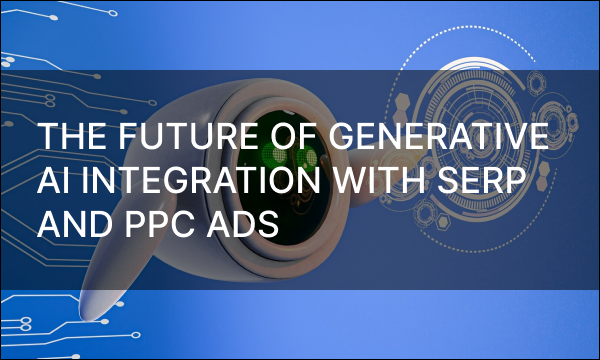Introduction to the Integrated Marketing Communications and its advantages
In today’s competitive digital landscape, PPC advertising is a powerful tool for driving traffic and generating leads, but its effectiveness is significantly amplified when integrated with a broader marketing strategy. Integrated Marketing Communications provides the framework for aligning all marketing efforts, from traditional advertising to social media and content marketing, ensuring a consistent brand message and maximizing impact. By leveraging IMC principles, you can create a cohesive and synergistic campaign that not only boosts the performance of your PPC ads but also strengthens your overall brand image. This harmonious approach fosters trust, builds brand recognition, and ultimately drives conversions by reinforcing the value proposition across multiple touchpoints.
The demand for these IMC skills, often synonymous with digital marketing expertise, transcends industry boundaries, making them highly sought after across diverse sectors. If you want to master the art of IMC, follow the steps in this article. Designed with a practical focus, our guide provides a comprehensive understanding of all aspects of integrated marketing communications, equipping you with the tools and knowledge to thrive in the digital age.
Integrated Marketing Communications
 Photo by Kim Menikh on Unsplash
Photo by Kim Menikh on Unsplash
Integrated Marketing Communication represents a paradigm shift in how businesses approach their marketing efforts. It emphasizes a unified and cohesive strategy where all communication and distribution channels are meticulously aligned to deliver a consistent and relevant brand message to target audiences. The core goal of an IMC campaign is to ensure this consistency and relevancy are maintained across all touchpoints over time through modern communication channels to reach consumers effectively.
This integration extends beyond just messaging; it encompasses the strategic allocation and coordination of all marketing resources, including personnel, methodologies, and technologies, within an organization. By harmonizing these elements, IMC aims to optimize the user experience while simultaneously maximizing profitability and minimizing costs. It’s about employing a variety of innovative and impactful approaches to guarantee that the right message reaches the right audience at the right time, fostering stronger brand recognition and customer loyalty.
Advantages of integrated marketing communications
Although effective integrated marketing communications management requires a lot of effort, it offers numerous benefits and advantages.
Meet the key benefits of integrated marketing communications:
- Helping you create a competitive advantage, grow sales and revenue, while saving you a lot of time, money and energy
- Reaching potential customers and redirecting them through the various stages of the buying process, strengthening the brand image and developing relationships with prospects
- Protecting your business from competition and helping to maintain long-term customer loyalty
- Assisting you cut through the noise of overwhelmed commercial messages every day
- Helping potential customers reduce the decision-making burden with timely updates, offers and reminders
- Using similar company images including photos and graphics and eliminating the need of duplicating them, saving a lot of time, money and workload
Components of integrated marketing communications
Effective marketing communications are a symphony of coordinated efforts, each instrument playing its part to create a resonant message that captivates the target audience and drives sales. From advertising and public relations to content marketing and social media engagement, every aspect of the communications strategy should be harmonized to achieve maximum impact. This integrated approach not only prevents message fragmentation and reinforces brand recognition, but also optimizes cost-effectiveness by eliminating redundant efforts and focusing resources on the most impactful channels.
By understanding how each touchpoint contributes to the overall customer journey and tailoring messaging accordingly, businesses can create a compelling and consistent narrative that ultimately propels sales and builds lasting customer relationships. This synergy between different communication channels ensures that the promotional message is received loud and clear, boosting brand awareness and solidifying its position in the minds of potential customers.
Various components of IMC include:
- Foundation involves a detailed comprehension of the target audience, product or service, and competitor’s activities
- Brand refers to the corporate identity of a business
- Corporate culture is important as the product or service must be consistent with the company’s mission and vision
- Promotional tools such as personal selling, trade promotions are used to improve relationships with existing and potential customers
- Communication tools such as direct sales, advertising, and promotion in social networks are used
- Integration tools based on business types and work cultures are available to help track customer activity
- Customer experience reinforces their opinion of a product or service, whether expectations were met or not
How to create an Integrated Marketing Communications plan
 Photo by Nikhil Mitra on Unsplash
Photo by Nikhil Mitra on Unsplash
Integrated Marketing Communications represent a holistic approach to business promotion, where various communication channels are strategically interwoven to maximize impact and effectiveness. The ultimate goal is to elevate brand visibility and forge a lasting impression in the minds of consumers, ensuring that the brand is top-of-mind when purchase decisions are made within its specific product or service category. An effective IMC plan orchestrates a multi-faceted approach, ensuring brand exposure across diverse platforms and touchpoints, creating a consistent and reinforcing message.
The development of a successful IMC plan requires careful consideration of available resources, precise timing for promotional activities, clearly defined marketing objectives, and a well-defined budget for resource allocation. A deep understanding of the business, its brand messaging, the unique features of its offerings, and most importantly, the target audience’s buyer persona is essential. The IMC plan must align with the overarching business goals, vision, and corporate culture, prioritizing the communication of the unique value proposition and customer benefits.
Successfully integrated marketing communications plan includes:
- A step-by-step review of marketing and communications to promote a brand, product or service to potential and existing customers
- Vision and corporate culture of the company
- Key components and characteristics of a business, product and service
- A detailed description of the buyer’s profile and expectations, as well as competitive advantages
- SWOT analysis and necessary actions to identify threats and weaknesses
- Detailed specification of the various tools required, including communication, promotion and integration tools
How to manage integrated marketing communications
Ensuring consistent brand messaging across diverse communication modes is crucial for building trust and solidifying brand identity. If you are promoting your products or services, that message should permeate all channels, from physical banners and billboards to digital platforms like social media and websites. A gap in messaging can confuse the target audience, erode credibility, and undermine the brand’s value proposition.
Therefore, a strategic and efficient integration of messaging is paramount for adapting the core message to suit each platform while maintaining its essence. Smart integration involves understanding the nuances of each communication channel and crafting content that resonates with its specific audience, all while consistently reinforcing the brand’s core promise of natural and artificial-free products.
Steps for integrated marketing communications management:
- Identify your target audience clearly to have a deep understanding of who your customers are, what their expectations and needs, and how your product can benefit them and meet their expectations
- Understand the purpose of your message so that it reflects what you want your customers to do after receiving your message and helps them move forward
- Design and structure your content correctly so that your customers can understand your message easily and quickly
- Choose the right communication channels for your target audience to ensure your customers receive business messages in the right place and at the right time
- Allocate a reasonable budget and distribute it correctly for promotion to manage multiple advertising activities
- Track your results to find out what’s working and what’s not, and optimize your plan accordingly to promote your business effectively
Integrated marketing communication monikers
Modern marketing is littered with terms like integrated marketing, marketing communication, strategic communication, and even brand communication, leading to understandable confusion. While each moniker might carry subtle nuances, they largely orbit the same core concept: orchestrating a cohesive and impactful message across multiple channels to resonate with a target audience. Though some terms might be employed to highlight specific communication disciplines, such as public relations or digital marketing, the basic objective remains consistent.
Ultimately, these efforts aim to inform, connect with, and ultimately influence potential customers regarding a business, its offerings, and the value it brings to the table. This unified approach ensures a consistent brand experience and maximizes the effectiveness of marketing spend.
Some most common monikers include:
- Public relations
- Strategic communication
- Digital communications
- Organizational communications
- Media relations
- Public affairs
- Corporate communication
- Investor relations
10 Strategies to achieve Integrated Marketing Communications
The goal of integrated marketing communications is to ensure that all elements work together to create a unified, seamless customer experience.
Key strategies to master integrated marketing communications:
- Consistent Messaging across all communication channels, including advertising, public relations, direct marketing, social media, and any other touchpoints with your audience
- Customer-centric approach seeks to tailor your messages to the needs, preferences and behavior of your target audience to create a more personalized and relevant communications strategy
- Coordinating all channels including print, broadcast, digital and social media to complement each other and create a unified brand experience
- Using technology to integrate multiple communications platforms, including marketing automation tools, CRM systems, and analytics to track and manage customer interactions across all channels
- Brand integration from advertising to packaging reflects and reinforces your brand’s personality, as does consistency across visual elements such as logos and color schemes
- Coordinated timing and scheduling for marketing communications ensures that messages are delivered at the right time and in a sequence that makes sense to the target audience
- Two-way communication in the form of feedback and engagement with your audience, including social media and customer service channels, allows you to respond to customer inquiries and feedback
- Employee engagement and internal communication ensures that they are aware of the brand message and aligned with the overall communications strategy, enhancing unity across the organization
- Measurement and evaluation of the effectiveness of your communication efforts helps you identify which channels are performing well and where adjustments are needed
- Adaptability to market changes and consumer behavior allows you to regularly evaluate the performance of integrated marketing communications strategy and make adjustments as needed
Conclusion
In today’s digital landscape, Integrated Marketing Communication has emerged as a crucial and cost-efficient strategy to amplify brand visibility and impact. By creating targeted, low-cost communications, IMC effectively elevates the profile of specific businesses, products, or services. At the heart of this approach are integrated marketing communicators, essentially skilled digital marketers adept at crafting and executing comprehensive digital marketing campaigns.
Leveraging Integrated Marketing Communications is a powerful strategy for maximizing the performance of PPC advertising and simultaneously enhancing brand image. By ensuring consistent messaging, visual identity, and brand values across all touchpoints, from PPC ads to social media and traditional marketing channels, IMC creates a unified and memorable brand experience. This synergy not only improves the performance of PPC campaigns by increasing CTR and conversions due to heightened brand recognition, but also cultivates a stronger, more positive brand perception in the long run. Investing in an integrated approach leads to a more efficient marketing spend, greater customer loyalty, and a more robust and valuable brand presence in the competitive marketplace.

